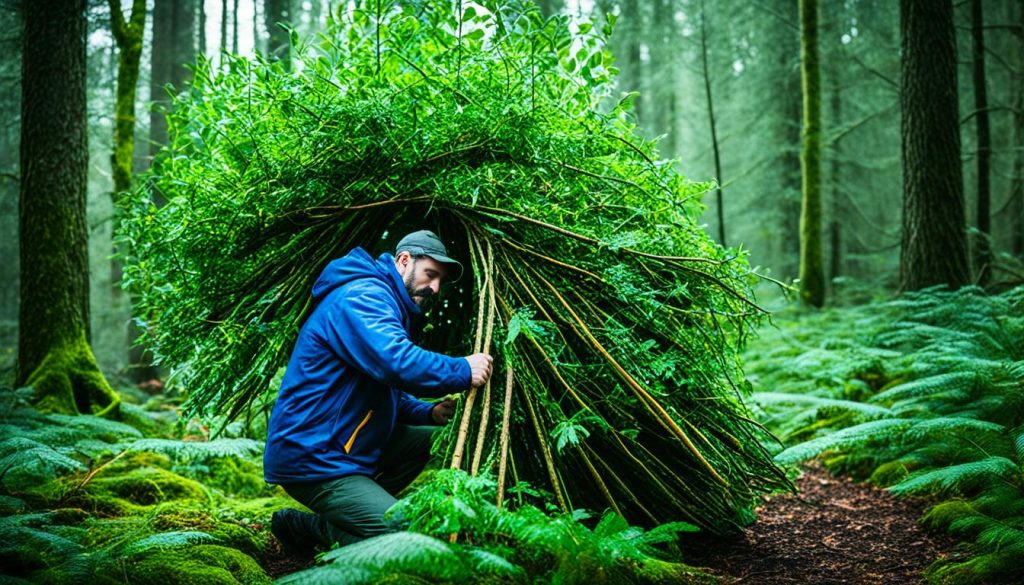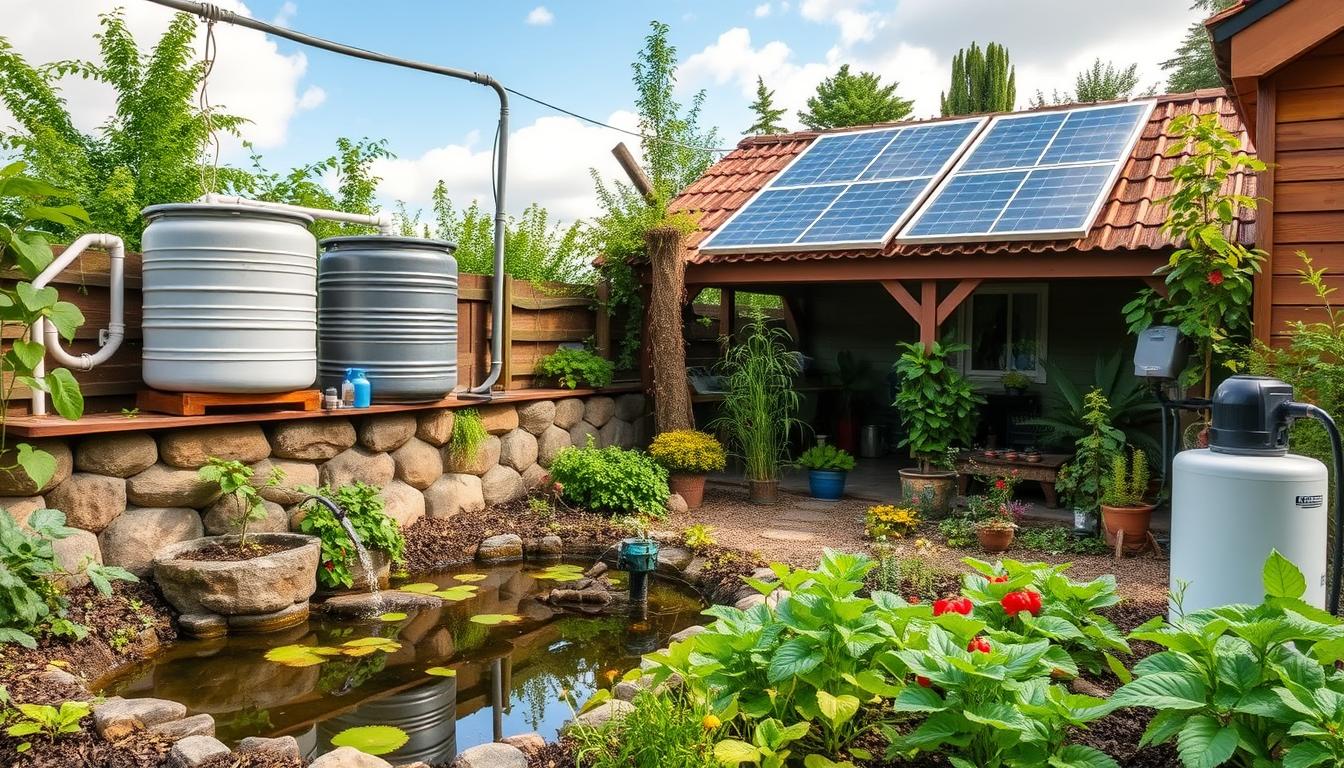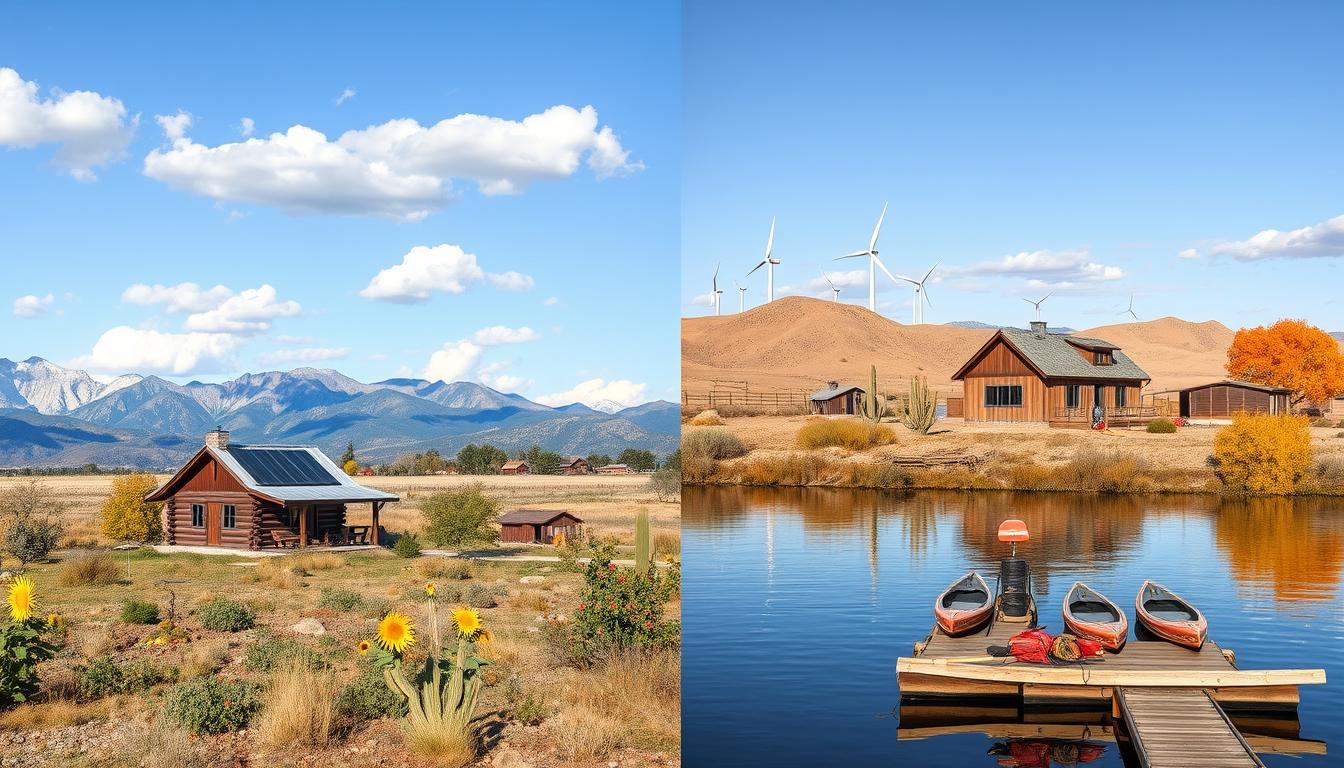Surviving in the wild often means building a strong and safe shelter. It’s key for campers, wilderness lovers, or those prepping for emergencies. This guide will show you how to use natural materials to make shelters that keep you safe and comfy.
Key Takeaways
- Learn how to assess your surroundings for suitable building materials, such as wood, branches, leaves, and grass.
- Discover the importance of shelter in survival situations, including protection from the elements and maintaining body temperature.
- Gain step-by-step instructions for constructing a basic lean-to and a debris hut using natural resources.
- Explore techniques for enhancing your shelter’s comfort and safety, including insulation and waterproofing.
- Develop essential survival skills for effective shelter building in the wild.
Understanding the Importance of Shelter in Survival Situations
When you’re in a survival situation, having a good shelter is key. A strong shelter protects you from the elements and helps you stay safe. It’s a crucial step in making it through tough outdoor challenges.
Protecting Against the Elements
A good shelter keeps you safe from rain, wind, and extreme temperatures. It acts as a barrier, keeping you away from the dangers of exposure. This can prevent serious health issues like hypothermia or heatstroke.
Maintaining Body Temperature
Keeping your body temperature stable is vital for survival. A shelter that’s insulated and weatherproof helps control your body’s heat. This is key to avoiding hypothermia or heat exhaustion, which can be deadly.
Spending time and effort on building a strong shelter is a key part of survival preparedness. This skill can greatly improve your chances of getting through tough times safely.
“The first priority in a survival situation is to establish a shelter that will protect you from the elements.”
A well-made shelter does more than just protect you physically. It also gives you a psychological boost, making you feel secure and stable. Knowing how important shelter is helps you prepare for the unexpected and boosts your survival chances.
Assessing Your Surroundings for Suitable Materials
When you need to build a shelter, knowing your surroundings is crucial. Look around to find natural materials you can use. This helps you pick the right materials for your shelter based on their strength, insulation, and how easy they are to get.
Look for lots of natural materials like wood, branches, leaves, and grass. These can be the base, structure, and insulation for your shelter. Check how good and how much you can find of these materials.
- Check the size, thickness, and condition of branches and logs for the shelter’s frame and walls.
- See how easy it is to get to leaves, grass, and other plants for insulation and a roof.
- Think about how close and easy it is to get these natural materials to where you want your shelter to be.
By looking closely at what’s around you, you can find the best natural materials for your shelter. This will help you survive in the wild.
“The key to survival is adaptability, and that starts with understanding your environment.”
The more you know about what you have, the better you can make a strong and safe shelter. This is key in any survival situation.
Identifying Natural Materials for Building a Shelter
When you’re in a survival situation, the natural materials around you can be your best friends. Knowing what these materials are and how they work can help you build a strong and useful shelter. This shelter will keep you safe from the weather.
Wood and Branches
Wood is a key material for building shelters. You can use tree trunks or branches, depending on what you need. Look for fallen trees or branches that are easy to pick up and shape. Make sure the wood is dry and not rotten for the best shelter strength.
Leaves and Grass
Leaves and grass are also important for building a cozy shelter. They help keep you warm by trapping heat. Collect lots of these and put them inside your shelter to make it warm and safe.

“The beauty of using natural materials for shelter is that they are readily available and often free for the taking. With a little creativity and resourcefulness, you can turn these humble elements into a sturdy and reliable refuge.”
Knowing how to use wood, branches, leaves, and grass can help you make a safe and cozy shelter. This way, you can use the natural world to protect yourself in any survival situation.
Building a Shelter
In a survival situation, having a good shelter is key for staying safe and comfortable. You can make a shelter using things you find in the wild. This guide will help you make two common shelters: the lean-to and the debris hut.
Constructing a Basic Lean-To
The lean-to is a simple yet effective shelter. You can make it with things from nature. Here’s how to do it:
- Find a strong tree or big rock to use as your shelter’s base.
- Collect long, straight sticks or branches for the main structure. Lean them against the tree or rock, making a sloping roof.
- Use smaller branches, leaves, grass, or other materials to cover the roof.
- Make sure your shelter is stable and can stand up to the weather by tying it together with cordage or natural fibers.
Creating a Debris Hut
The debris hut is another way to build a shelter. It uses many natural materials to make a cozy space. Here’s how to make one:
- Look for a spot that’s protected, like under a tree or in a natural dip in the ground.
- Gather lots of leaves, branches, grass, or other materials that keep you warm.
- Build a dome-shaped frame with sticks or branches, then cover it with your materials.
- Make sure your hut is warm and weatherproof by packing the materials in tightly and sealing any gaps.
When making a lean-to or debris hut, think about the weather and the place you’re in. Make sure your shelter is right for the climate. Also, be careful to avoid dangers or weak spots that could make your shelter unsafe.
“The wilderness is a harsh teacher, but it rewards the prepared mind.” – Jon Krakauer
Enhancing Your Shelter for Comfort and Safety
Building a strong and cozy shelter is key to survival. You can make your shelter better by adding insulation and waterproofing. This keeps you safe and comfortable outside.
Insulation Techniques
Keeping your body temperature steady is vital. Use leaves, grass, and pine needles to insulate your shelter. These materials trap warm air inside, keeping you warm.
Creating a reflective barrier is another good idea. Use materials like aluminum foil or a space blanket inside your shelter. This makes your shelter warmer and more comfortable.
Waterproofing Your Shelter
It’s important to keep your shelter dry. Use leaves, bark, and mud to make it waterproof. These materials can be used on the roof and walls to keep rain and snow out.
If you have tarps or plastic sheeting, use them too. Cover the roof and seal the edges to keep your shelter dry. This makes your shelter comfortable, even in bad weather.
“The true test of a person’s survival skills is not in the initial construction of a shelter, but in their ability to maintain and improve it over time.”
Essential Survival Skills for Shelter Building
Building a reliable shelter in the wild requires the right survival skills. These include fire-making, knot-tying, and tool usage. Mastering these techniques can make your shelter better and last longer.
Starting a fire is key for shelter building. It provides warmth and light, making your shelter more livable. Learning to make a fire with a ferrorod or bowdrill can be a lifesaver.
Knot-tying is also vital. It helps secure your shelter’s frame and attach branches together. Knowing knots like the bowline and clove hitch improves your shelter-building skills.
Being good with tools is important too. Using a knife, hatchet, or saw efficiently helps gather and shape materials. It also keeps you safe and your gear in good condition.
By improving these survival skills, you can build a shelter that stands up to the elements. This gives you the protection and comfort you need in the wild.

“The key to survival is to be prepared, not just for the obvious challenges, but for the unexpected ones as well.” – Bear Grylls
Practice and refine these skills to become more confident in building a shelter. The more you practice, the better you’ll be in survival situations.
Building a Shelter
Survival and preparedness mean knowing how to build a strong shelter. It’s key whether you’re in an emergency or just out in nature. We’ll show you how to make a shelter using what’s around you.
Assessing Your Environment
First, check out your surroundings for shelter spots. Look for overhanging rocks, thick plants, or fallen trees. Think about the weather to pick the best shelter type.
Gathering Materials
After picking a spot, collect what you need. You might find branches, leaves, or rocks. These can be used for different parts of your shelter.
- Branches and logs for the frame
- Leaves, grass, or other vegetation for insulation and waterproofing
- Rocks or stones for added stability and protection
Get a variety of materials for a strong and cozy shelter.
Building the Shelter
Now, start building with what you’ve gathered. Use branches and logs for the frame. Add insulating materials like leaves or grass inside. Finally, use stones or a tarp to make it stronger and weatherproof.
Building a good shelter means trying new things and making it better as you go. By following these steps and improving your skills, you’ll make a safe and comfy shelter anywhere.
Tips for Maintaining and Improving Your Shelter
Building a strong shelter is just the start in survival and preparedness. To stay safe and comfortable in the wild, you must keep your shelter in good shape. Here are some tips to help you do that:
Reinforcing the Structure
Your shelter may need extra support over time due to the elements. Check the framework often, fix weak spots, and swap out any broken parts. Doing this keeps your shelter strong against the wilderness and protects you.
Repairing Damage
Shelters can get damaged by weather, animals, or other things. Fix any problems quickly. Close up holes, stop leaks, and make sure your shelter is as good as new. This stops more damage and keeps you dry and safe.
Adapting to Changing Conditions
The wilderness changes, and so should your shelter. Watch the weather and how the environment changes around you. Change your shelter’s design and setup to keep it working well for you. This ensures it keeps you safe and protected.
Use these tips in your survival and preparedness plans to keep your shelter in top shape. This way, it will always be a safe and cozy place in the wilderness.
Preparing for Emergencies: Shelter Building Basics
Building a strong shelter is key for outdoor lovers and emergency preppers. Having the right gear and supplies is vital for any unexpected event. The right equipment can mean the difference between a cozy, safe shelter and a tough, uncomfortable one.
Essential Gear and Supplies
For building a shelter, having the right tools and materials makes a big difference. Start with sturdy knives or hatchets for cutting and shaping materials like branches and leaves. A reliable fire source is also crucial, whether it’s waterproof matches, a lighter, or a magnesium fire starter. This helps you stay warm and light up your shelter.
Don’t forget a tarp or a big piece of plastic for a weatherproof cover. Also, consider packing a sleeping bag or thermal blanket for extra warmth. With these must-have items, you’ll be ready to face any outdoor challenge and build a safe shelter.







